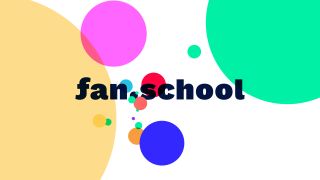Formerly known as Kidblog, Fanschool is a fun social communication, blogging, and portfolio-type platform that can be used in teaching and learning. This Fanschool lesson plan can help you implement the tool in your classroom.
Fanschool is a great alternative to traditional social media platforms such as TikTok, Twitter, Instagram, and Facebook as it provides a bounded and safe online space for students. It offers many interactive features that can be used to strengthen student engagement during teaching and learning, and allows for teacher moderation.
For an overview of Fanschool, check out What is Fanschool and How Can it be Used for Teaching? Tips and Tricks.
Below is a sample lesson plan geared toward the English Language Arts (ELA) subjects, specifically focused on the topics of expressive communication and creative writing for high school students.
Subject: English Language Arts (ELA)
Topic: Expressive Communication and Creative Writing
Grade Band: High School
Learning Objective:
At the end of the lesson, students will be able to:
- Draft a series of short, creative dystopian stories
- Post a series of short, creative dystopian stories within a social communication online space
- Communicate online with peers regarding their work
Fanschool Lesson Plan: Teacher Instruction
Using a slide deck through a presentation edtech tool, such as Google Slides, teachers can create a lesson focused on what creative writing is, how to write short stories, and genre writing.
For this specific lesson, a few slides can go into detail on dystopian stories. Even if students are not immediately familiar with the term dystopian, you can share with them that many popular books that have been turned into movies are dystopian stories. To do this, you can use The Maze Runner, Hunger Games, the Divergent series, and The Giver as examples of the dystopian stories, sharing what the societal state and nuances of each are. This would provide students with not only an idea of what dystopian stories are but inspiration for their own dystopian stories.
Student Fanschool Pages Creation
Providing students with the opportunity to publish and use their authentic voices to share their learning, and engage with their peers and teachers is at the core of Fanschool. Over several weeks/months/academic year, have students create 5-10 entries that are creative short dystopian stories. The teacher can decide the time frame and how often a new story should be posted.
Each story should include the narrative text, but also related images and/or links to other related content. Some students may want to have each story build off of the previous one, or each story can be new, such as an anthology. It is also fruitful to provide students with choices and allow them to use their strengths to demonstrate their learning.
Peer Interaction
After each student publishes one of their creative short dystopian stories on Fanschool, peers from the class should read at least three other stories and add comments, ask questions, and offer alternative plot points. It is the hope that the author and readers will engage in several rounds of expressive communication, similar to on traditional social media platforms. Teachers can moderate the discussion, pose additional questions, and share additional resources.
What if My School District Does Not Allow Social Media?
What makes Fanschool unique is that it is designed as a bounded social communication tool, which is different from traditional social media outlets such as TikTok, Instagram, and Twitter. The content and conversations that will occur within the Fanschool platform created by students will only be accessible by other students in the class, their teachers, and families as authorized by the teacher.
What Resources Does Fanschool Provide to Families?
Fanschool incorporates families into the use of the platform and offers the opportunity to create a parent account. Within the account, parents can connect with their children’s content and conversations within Fanschool. In addition, Fanschool provides dedicated content and resources for families who homeschool.
What was once Kidsblog has grown to Fanschool; a robust social communication platform that students would want to contribute to, while giving teachers the chance to document learning and progress. Give this Fanschool lesson a try and see how it benefits your students’ and their families' engagement in learning.

